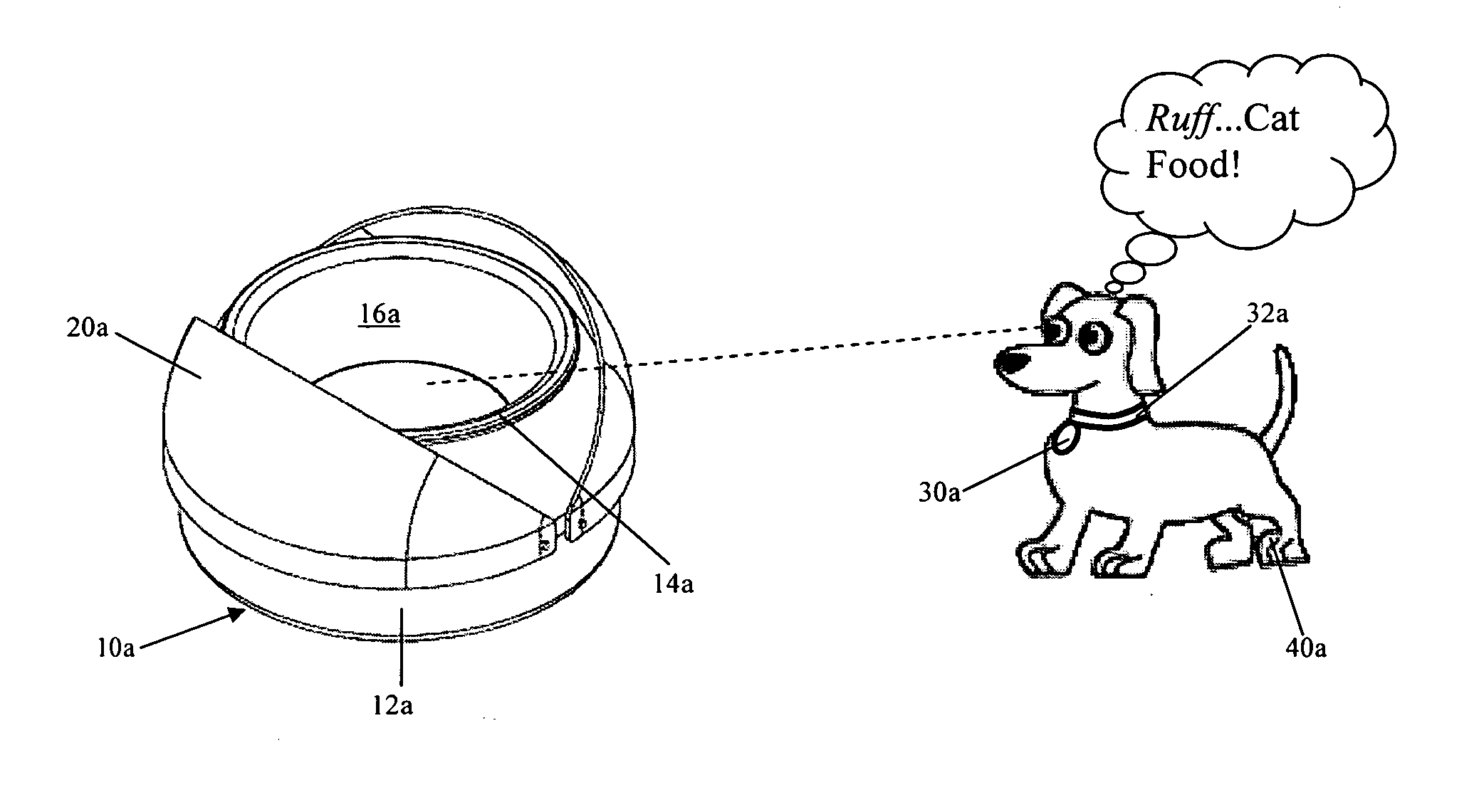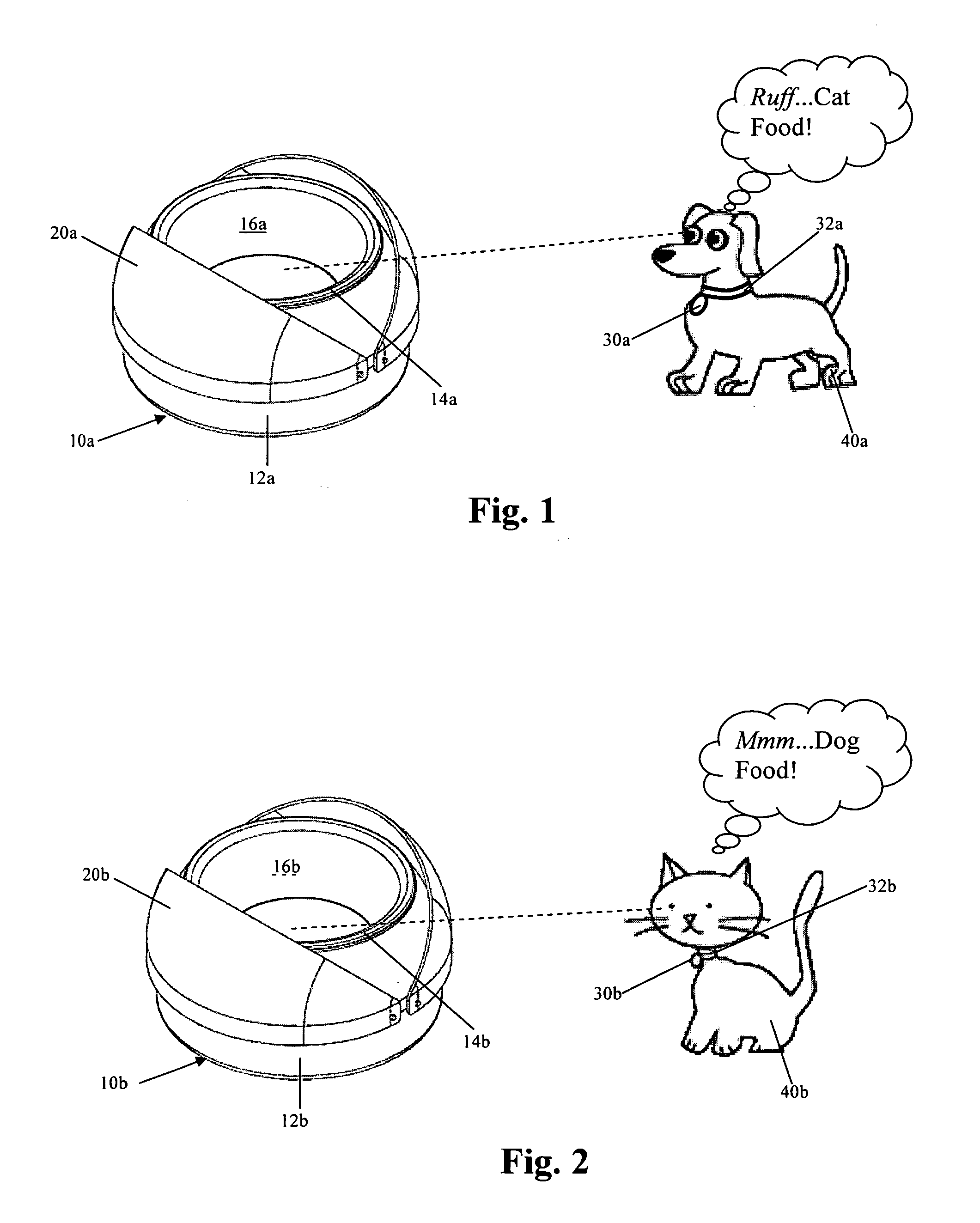System for preventing access to a device by an unwanted animal and method of altering an animal's behavior
a technology for preventing an unwanted animal, applied in the field of devices for animals, can solve the problems of not providing a mechanism in order to prevent access to a device by an unwanted animal, unable to prevent the unwanted animal from accessing the device, and not providing an actuation mechanism for the device, so as to achieve the effect of preventing access and preventing access
- Summary
- Abstract
- Description
- Claims
- Application Information
AI Technical Summary
Benefits of technology
Problems solved by technology
Method used
Image
Examples
Embodiment Construction
[0057] An embodiment of a system of the present invention is depicted with respect to FIGS. 1-15b. FIGS. 1-3 are a schematic representation of an implementation of the invention and although it depicts a specific device, alternate embodiments of the device are anticipated and will be discussed in more detail in following paragraphs. In general the system includes a device 10a, 10b, for example a feeding dish for an animal such as a dog, cat or livestock. As shown in FIGS. 1 and 2 the device 10a, 10b is in an open, non-activated condition. The device in general includes a housing 12a,b forming an opening 14a,b, a storage area 16a,b and a cover 20a,b. The system also includes a transmitter 30a,b. In an embodiment, the transmitter 30a,b is worn on a collar 32a,b of the unwanted pet or animal 40a,b.
[0058]FIG. 1 depicts a dog 40a that is the unwanted animal that should not be eating from the device or bowl 10a. In a normal setting in a home that has multiple pets that have different die...
PUM
 Login to View More
Login to View More Abstract
Description
Claims
Application Information
 Login to View More
Login to View More - R&D
- Intellectual Property
- Life Sciences
- Materials
- Tech Scout
- Unparalleled Data Quality
- Higher Quality Content
- 60% Fewer Hallucinations
Browse by: Latest US Patents, China's latest patents, Technical Efficacy Thesaurus, Application Domain, Technology Topic, Popular Technical Reports.
© 2025 PatSnap. All rights reserved.Legal|Privacy policy|Modern Slavery Act Transparency Statement|Sitemap|About US| Contact US: help@patsnap.com



